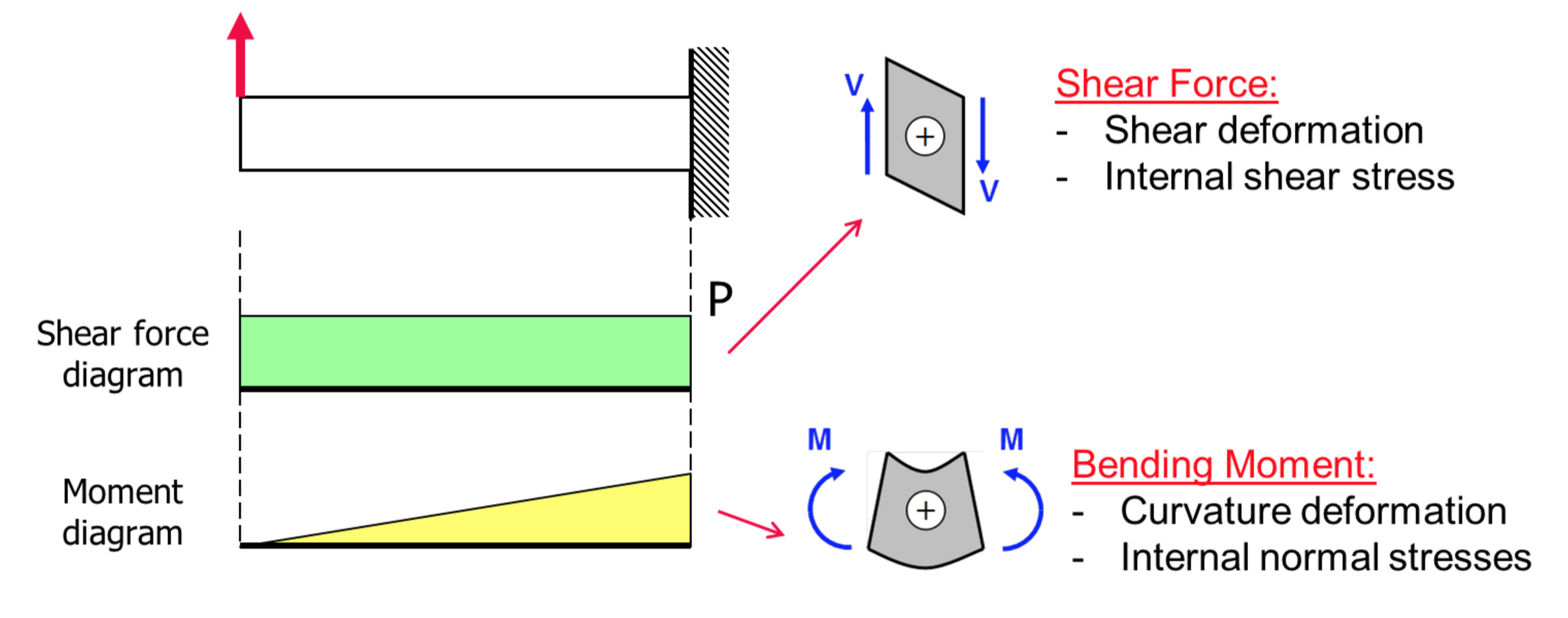Introduction
Examining bending of beams is a somewhat more complicated affair compared to torsion and axial loaded members. One major complication is that bending actually involves two types of loading. You have already encountered this in your previous course in statics where you drew bending moment and shear force diagrams illustrating the distributed internal loading. Take the simple beam problem illustrated below. The applied loading will generate internal shear forces and bending moments. Each of these internal forces will produce a different type of deformation and a different type of internal stress.

In this unit, we will examine the stresses that result in a beam due only to the internal moment loading. We will examine the effect of the internal shear and the overall deformation of beams in later units.
Learning Objectives
By the end of this unit, students should be able to…
- Determine the shear force and bending moment diagrams for straight beams with arbitrarypoint and distributed loading (review)
- Explain the concept of the neutral axis
- Describe the assumptions made in deriving the flexure formula and discuss their implications
- Apply the flexure formula to calculate normal stresses in straight symmetric beams
-
4.1 Adopting a Consistent Beam Coordinate System
-
4.2 Bending Moment & Shear Force Diagrams
-
4.3 Bending of Symmetric Beams
-
4.4 Summary and Further Reading



